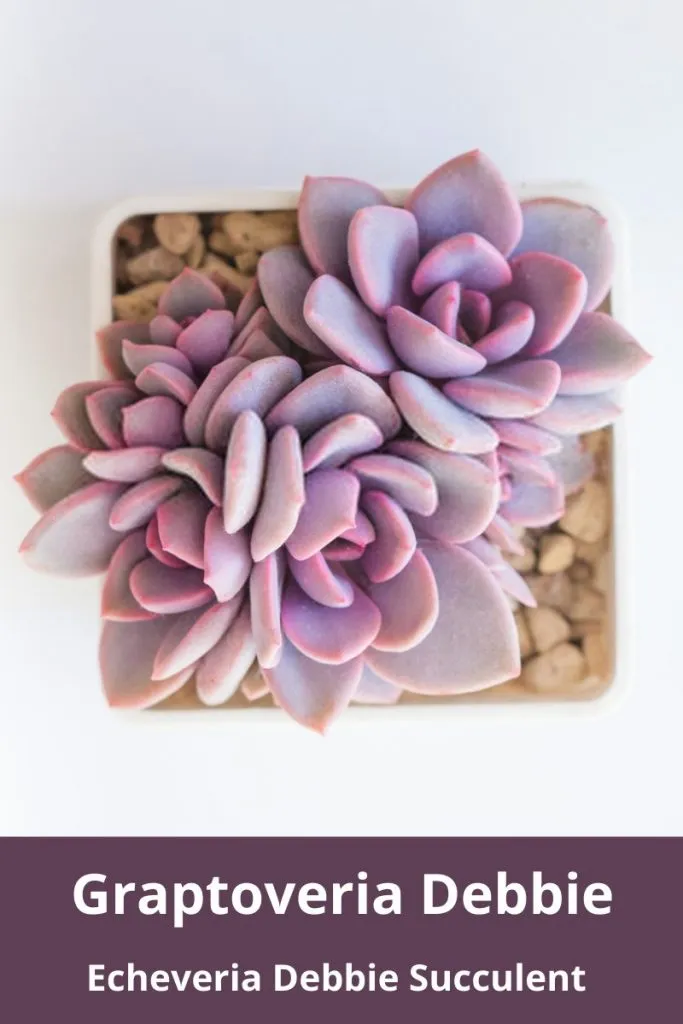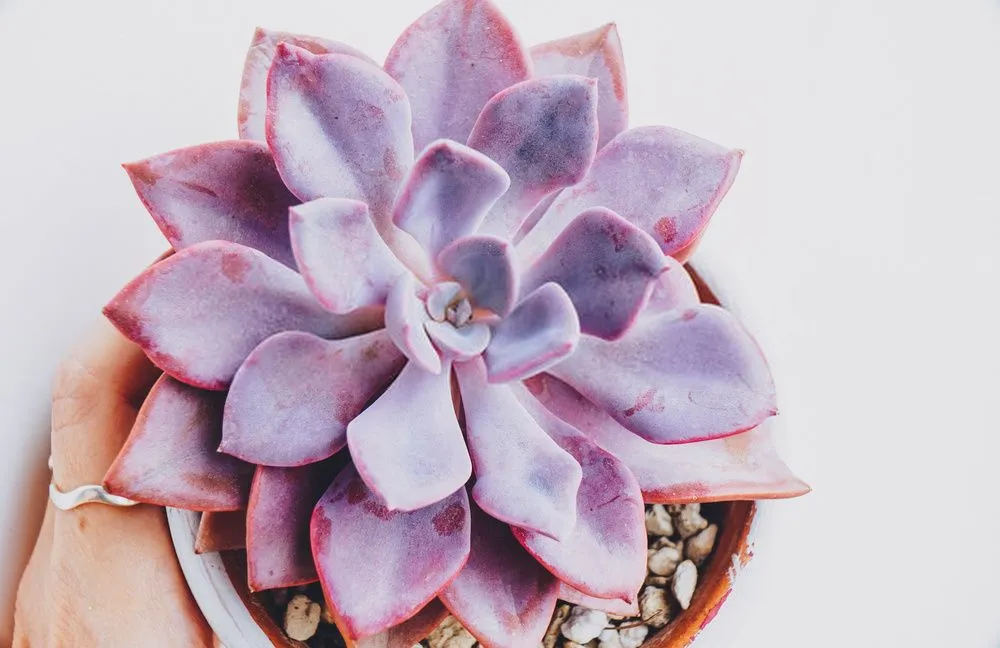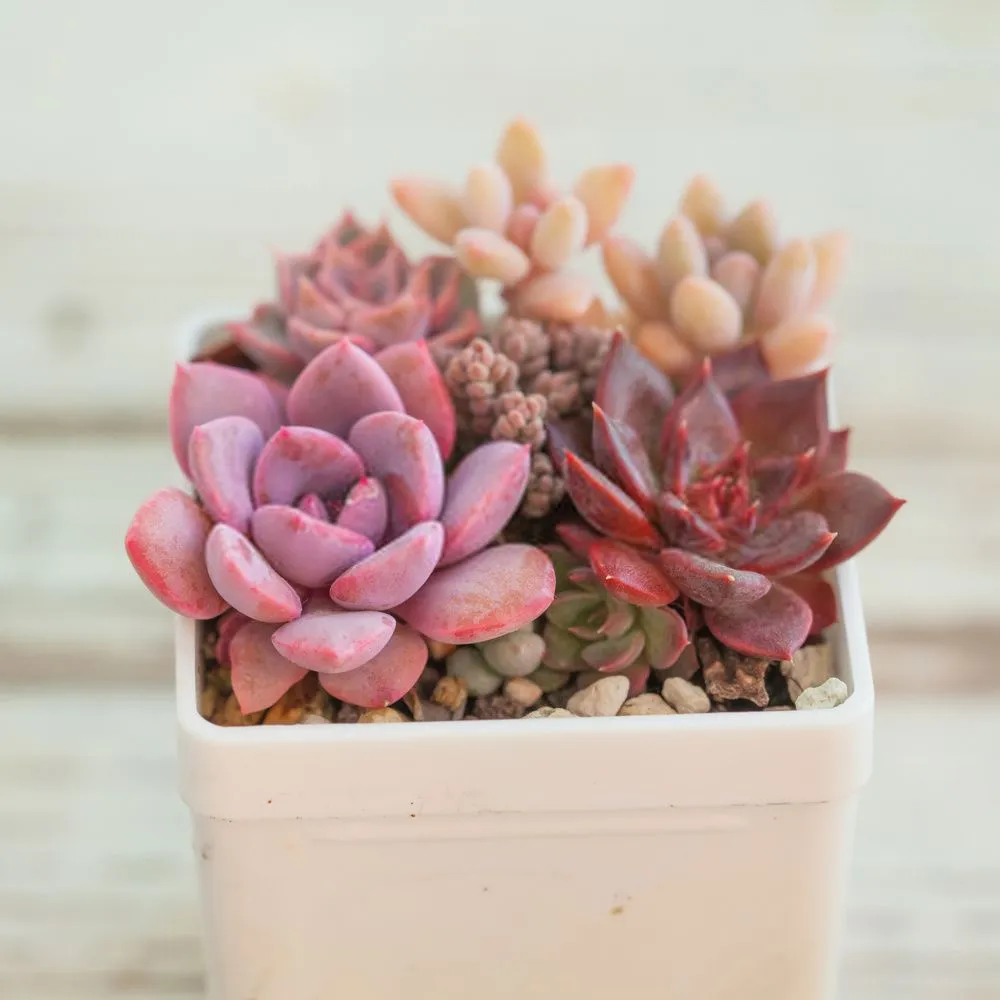Graptoveria Debbie Succulent Plant Care Guide

Common name:Graptoveria Debbie
Family:Crassulaceae
Origin:Graptopetalum amethystinum and an unknown species of Echeveria.
Sunlight:6 to 7 hours
Dormancy:Summer dormant
Water:In summer weekly and winter bi-weekly
Soil:porous soil
Introduction: Graptoveria Debbieis a cross between an echeveria and a succulent. When the plant is under healthy stress, the leaves in bluish-purple colour will grow into pink tips. This succulent is suitable for outdoor and indoor use, making it highly adaptable and appealing. Another quality that makes it popular among succulent growers is that it offsets widely, allowing growers to spread it in various ways.
Its rosettes can easily reach a diameter of twenty cm. In the spring, this low-growing plant will blossom with tiny apricot blooms.
These are Graptoveria-specific tips and tricks. Check out the page for a more fundamental approach to caring for all succulents.
Hybrids and Cultivars: Graptoveria, the succulent plant, is a hybrid of the plant Echeveria succulent, but you can also cross it to produce stunning X graptoveria, commonly known as the ‘topsy Debbie’ succulent.
some common growing tips for Graptoveria Debbie succulent
Echeveria Debbie is a succulent plant with conventional succulent care requirements. Although it is not a cold-hardy plant, it does become dormant in the summer. If you’ve never taken care of succulents before, I recommend carefully reading this care guide to avoiding missing any critical steps inGraptoveria Debbie care.
- Succulents have a wide range of care requirements that alter your location’s seasons or climate. Several aspects must be considered when caring for succulents, which can make these low-maintenance plants challenging to manage.
- Before you create a schedule for the succulents, you have to learn about your local climate and determine if you want to grow these succulents in your garden or balcony. After you’ve investigated and documented the average temperatures in your area throughout the seasons, you can care for your plant using the following suggestions.

Debbie Succulent Sunlight Needs
Although Light Graptoveria thrives in full sun, it may also be grown in partial shade because it will get sunburned in direct sunlight in hotter climes. Debbie plants prefer mild morning sunlight because it keeps them from sunburn and brings out their beautiful cool tones. It is critical to decide where you will position the plant to receive at least six hours of sunlight each day. Here are some things to think about while growing succulents indoors and outdoors, as well as some helpful hints.

Graptoveria Debbie Indoor & Outdoors
To cultivate a gorgeous outdoor succulent arrangement, you don't need a large garden. These are the plants for folks who don't have unlimited outdoor space or little living space. Debbies look great on a balcony and also in succulent positions outside. If the succulent is not planted directly into the ground, it is much easier to control the quantity of sunshine it receives. Plants in pots and containers so that you easily move around the yard to follow the sun and be placed in sheltered locations during periods of extreme sunlight. Don't put tall plants around Debbie succulents since they will offer too much shade and hinder the succulent from enjoying at least six hours of light per day. The answer will be no because it can also be grown indoor.
Consider not only the most attractive location for your plant but also how much natural sunshine it will receive in that location.Echeveria Debbieis famous because they are little, tiny plants that look adorable and trendy when set on a desk or coffee table.
Because providing enough light for indoor plants to live and grow to their full potential is much more complex, being strategic with where you place them is critical. Debbie plants must be put in sunrooms or anywhere else in the space that receives at least 6 hours of normal sunlight.
If your plant is in a position inside the building where it doesn’t receive at least three or four hours of sunshine each day, you’ll have to relocate the plant to provide it with the necessary quantity of light. It’s an easily forgettable thing, so try to make it a habit or put a reminder on your mobile phone or in your diary.
Here is the Propagation process
This plant is elementary to propagate. Debbie’s can be grown through seeds, leaf cuttings, and offsets. To know more about it, follow this guide till the end.
Seeds
Plant 10 to 20 seeds in a tray after purchasing seeds from a reputable vendor. Insert one of your fingers approximately an inch into the cactus potting soil and put the seed there. Water the dish every two to three days until the seeds germinate and cover the basics with extra potting soil. Once the juvenile succulents have developed a strong root system, you should move them into separate pots to continue to grow.
Cutting
Leaf cuttings are the most common method of propagation for Debbie succulents. Twirl a healthful leaf off the primary branch and indifferent it for one day or two before planting.
Offset
Debbie succulentsdevelop a lot of offsets throughout their lives. Removing the offset is beneficial not only for propagation but also for maintaining the plant’s overall appearance.
To have the maximum chance of success, remove the offset from the mother plant with a sterilized knife. Offsets are the simplest component of the plant to grow, and they immediately look great.
Conclusion
They can turn gorgeous pink, purple, or scarlet colors with adequate sun and correct Graptoveria care. They’re a terrific addition to any houseplant collection because of their vivid, multi-colored rosettes and plump leaves.








































